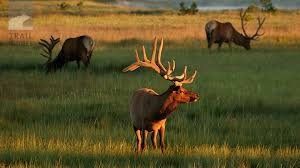May
13
How does the economy influence behavior adaptation and disease fluctuation within the Yellowstone herds?
May 13, 2016 | Comments Off on How does the economy influence behavior adaptation and disease fluctuation within the Yellowstone herds?
Elk are one of the many types of wildlife in the greater Yellowstone area. Tourists come from all over to observe and learn about the wildlife. It has been accounted that 93% of tourists come to see the wildlife. The elk population is one of the most plentiful and is seen most often making the Elk one of the most economic incomes. Elk viewing and hunting has become a huge part of the economy for the greater Yellowstone area, but when cattle and elks cross paths, the elks are displaced and cannot thrive, therefore affecting the economy.
States that have an over abundance of Elk allow for the removal of a predetermined amount of Elk per season. Hunters and Hunting outfitters are in a position to obtain significant economic gain each season. Hunters and outfitters provide economic input into the economic system that surrounds the Yellowstone National Park. Money that is spent on hunting of Elk involves tag prices, gear prices, and other miscellaneous rental, room and board, and various other fees. Gardiner, Montana thrives on the economic fluxes associated with Elk hunting and Outfitting. But as the harvesting of mature buck trophy elks are declining so is the economic input into economies such as those in Gardiner and surrounding towns suffer.
Elk behavior has had to go through several changes over the past few years with the integration of wolves and hunters. Their travel patterns have changed quite a bit because of this. Blacktail is a good area for elk to gather but also has plenty of hunters so elk will not go in that area because of it. Madison valley provides a safe passage for elk so it is more likely that they would go this way. Their Northern route is riddled with wolves so that would be the area where the elk population becomes thinned out.
Brucellosis is a contagious bacterial disease that originated in livestock. Both Elk and Bison have been exposed to the disease in the greater Yellowstone ecosystem. The prevalence of the disease in Elk should be fairly low, but with the presence of about twenty-two feedgrounds in Wyoming, the high density of Elk have been known to carry high densities of the disease. The transmission of the disease from feedground Elk is known to be the cause of recent infections of Wyoming cattle.
To get involved with this discussion, you can comment below on posts or post your own response on your personal social media account. Just make sure to include the #FantasticFelk in your social media post!
Additional Scources
- http://www.cfr.washington.edu/classes.esrm.459/yellowstone/elk/economics.htm
- http://www.bozemandailychronicle.com/news/economy/elk-hunting-changes-worry-people-in-gardiner/article_12844c82-2c14-512f-8d09-0aad55541282.html
- http://www.counterpunch.org/2016/05/02/the-economic-value-of-yellowstone-national-park/
- https://www.nps.gov/yell/learn/nature/elkinfo.htm
Mar
30
Hello world!
March 30, 2016 | Comments Off on Hello world!
Welcome to Longwood Blogs. This is your first post. Edit or delete it, then start blogging!
